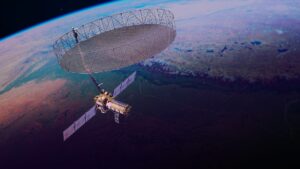After more than five decades, humanity is heading back to the Moon. NASA’s Artemis III mission, slated for late 2026, will land astronauts near the lunar South Pole—the first human visit to the Moon since Apollo 17 in 1972. But this time, it’s not a symbolic visit. This time, NASA is building the foundation for a permanent presence on the Moon—and beyond.
What Makes Artemis III Different?
Unlike the Apollo missions, Artemis isn’t a one-off event—it’s part of a broader plan to establish a sustainable human presence on the Moon. Key differences include:
- Landing at the lunar South Pole: A region believed to hold water ice in permanently shadowed craters
- Use of SpaceX’s Starship HLS: The Human Landing System, provided by SpaceX, will ferry astronauts from lunar orbit to the surface
- Increased crew duration: Artemis III astronauts will spend over a week on the Moon
- Technology testing: Power systems, habitats, and resource extraction will be tested for future use on Mars
Meet the Artemis III Astronauts
The mission’s diverse crew will include the first woman and the first person of color to walk on the Moon. While final crew selection is still underway, NASA has named 18 candidates in the Artemis Team, including Christina Koch, Victor Glover, and Jessica Watkins.
The selection highlights NASA’s renewed commitment to inclusion and the global nature of the Artemis program, which includes contributions from the European Space Agency, Japan, and Canada.
Why the Lunar South Pole?
The lunar South Pole is a strategic location due to its constant exposure to sunlight (ideal for solar power) and the presence of frozen water in shadowed regions—crucial for future life support and fuel generation.
This area will also serve as the testing ground for technologies aimed at supporting long-term human missions on Mars.
How the Mission Will Work
Artemis III will begin with the launch of NASA’s Space Launch System (SLS), carrying the Orion spacecraft. After entering lunar orbit, Orion will dock with SpaceX’s Starship HLS, which will then descend to the surface with two astronauts.
The remaining crew will remain in orbit to oversee systems and perform remote support. After completing surface operations, the astronauts will ascend in the Starship and rendezvous with Orion for the return trip to Earth.
Lunar Infrastructure Under Development
NASA and its partners are developing a range of infrastructure components to support long-term lunar missions:
- Gateway: A small lunar space station for crew transfer, research, and refueling
- Habitat modules: Pressurized living quarters that can be expanded over time
- ISRU systems: In-situ resource utilization tools to extract water and oxygen from lunar soil
- Power stations: Solar arrays and nuclear systems for continuous energy supply
These technologies are being developed under NASA’s Artemis Base Camp initiative and will play a critical role in future missions to Mars.
What Comes After Artemis III?
Artemis III is just the beginning. NASA plans annual Artemis missions through the 2030s. Artemis IV will expand the lunar Gateway. Artemis V and beyond will focus on lunar science, technology validation, and permanent outpost construction.
Private companies are also planning lunar landers, cargo missions, and telecom networks—turning the Moon into the first extraterrestrial economy.




